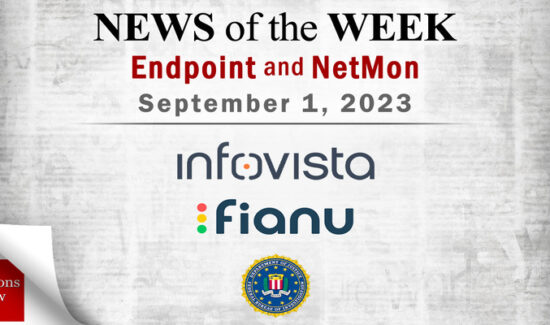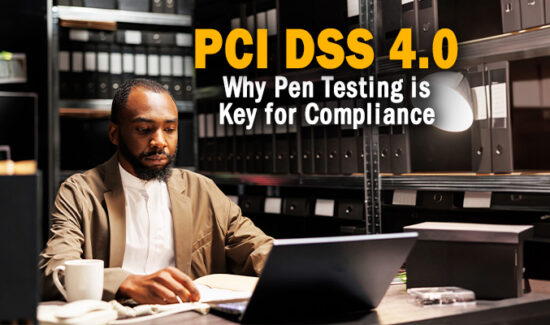15 Email Security Best Practices to Consider in 2023

The editors at Solutions Review look over email security best practices every enterprise should consider incorporating into their own everyday routine.
Email security is of paramount importance to enterprises for several reasons. One of the main reasons is they serve as a primary means of communication within and outside the organization, making them a prime target for cyber-criminals. Unauthorized access to corporate emails can lead to data breaches, exposing sensitive information like financial data, customer details, and intellectual property. Such breaches can result in severe financial losses, reputational damage, and legal liabilities, eroding customer trust and stakeholder confidence. Ensuring email security also safeguards against potential insider threats, where disgruntled or careless employees might intentionally or inadvertently leak confidential information. Implementing encryption and access controls can mitigate such risks.
Every enterprise has its own endpoint security strategy. This strategy should include email security as a focal point. The editors at Solutions Review look at some email security best practices worth considering in your enterprise’s current strategy.
15 Email Security Best Practices to Consider
Here are some email security best practices that enterprises should follow:
- Strong Password Policies: Implement a strong password policy for all email accounts. Encourage employees to use unique, complex passwords that combine uppercase and lowercase letters, numbers, and special characters. Enforce regular password updates.
- Multi-Factor Authentication (MFA): Require MFA for all email accounts. This adds an extra layer of security, requiring users to provide additional verification (such as a one-time code sent to their mobile device) along with their password to access their email accounts.
- Encryption: Use end-to-end encryption for email communication. Encryption ensures that the content remains unreadable to unauthorized parties even if the email is intercepted. Consider encrypting emails using tools like Pretty Good Privacy (PGP) or Secure/Multipurpose Internet Mail Extensions (S/MIME).
- Secure Email Gateways (SEG): Deploy a secure email gateway to filter and scan inbound and outbound emails for malware, spam, and phishing threats. A SEG helps block suspicious emails and attachments before they reach users’ inboxes.
- Employee Training and Awareness: Conduct regular training sessions to educate employees about email security risks and best practices. Teach them to identify phishing attempts, suspicious links, and potentially harmful attachments.
- Email Authentication Protocols: Implement email authentication protocols like Sender Policy Framework (SPF), DomainKeys Identified Mail (DKIM), and Domain-based Message Authentication, Reporting, and Conformance (DMARC) to prevent email spoofing and phishing attacks.
- Email Archiving: Set up email archiving to retain copies of all emails for compliance purposes and to aid in investigations if security incidents occur.
- Secure Email Communication Policies: Establish policies and procedures for sharing sensitive information via email. Encourage the use of secure file transfer methods for transmitting confidential data.
- Monitoring and Incident Response: Implement email monitoring systems to promptly detect and respond to suspicious activities. Have an incident response plan in place to handle email security breaches effectively.
- Regular Software Updates: Keep email servers, clients, and security software updated with the latest patches and security updates. Regularly update and maintain the email infrastructure to protect against known vulnerabilities.
- Restrict Attachments: Limit the types of attachments sent or received through emails. Block potentially dangerous file extensions, such as .exe or .zip, from entering the network.
- Phishing Simulation Exercises: Conduct simulated phishing exercises to assess employees’ susceptibility to phishing attacks and provide additional training to those who need it.
- Mobile Device Management (MDM): If employees access email on mobile devices, implement MDM solutions to enforce security policies, such as requiring device encryption and enabling remote wiping capabilities in case of device loss or theft.
- Email Account Management: Regularly review and audit email accounts to ensure that only active and authorized users have access. Remove access for employees who no longer require it.
- Data Loss Prevention (DLP): Implement DLP solutions to prevent sensitive data from being leaked or shared accidentally via email.
Ultimately, email security is vital for preserving an enterprise’s overall reputation and competitiveness. By safeguarding communications and sensitive information, businesses can build and maintain trust with customers, partners, and investors. Moreover, robust email security practices enhance the organization’s resilience against cyber threats, making it more capable of withstanding sophisticated attacks and minimizing the impact of any successful breach. In today’s digital landscape, where cyber threats continue to evolve, email security remains a fundamental pillar of an enterprise’s cybersecurity strategy.
This article on Email Security Best Practices to Consider was AI-generated by ChatGPT and edited by Solutions Review editors.
- Endpoint Security and Network Monitoring News for the Week of September 1; Infovista, Fianu Labs, the FBI, and More - September 1, 2023
- Endpoint Security and Network Monitoring News for the Week of August 11; Entara, EY, Cloudflare, and More - August 10, 2023
- 15 Email Security Best Practices to Consider in 2023 - August 1, 2023


















